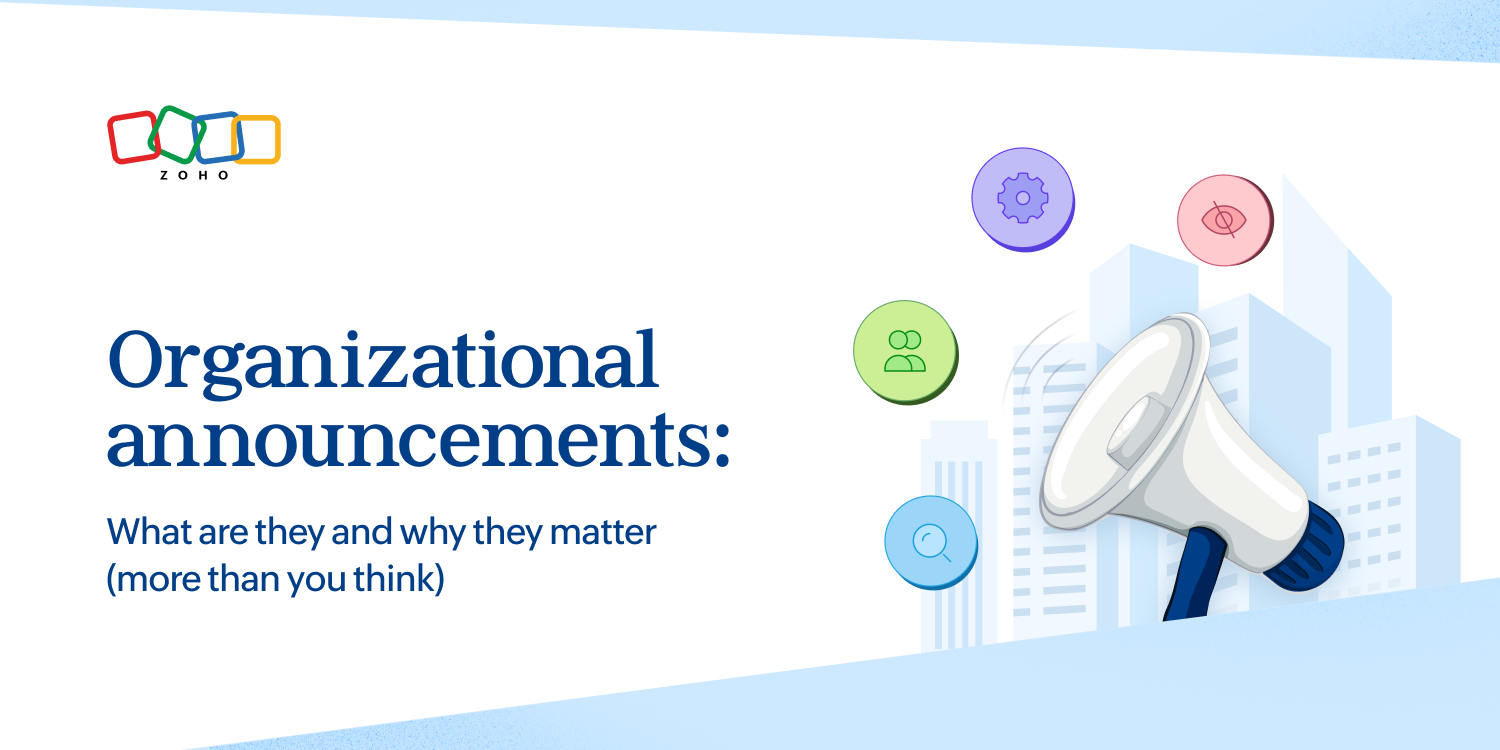- HOME
- All Topics
- Collaboration and Digital Workplace
- What is team effort? (And how to make it the norm)
What is team effort? (And how to make it the norm)
- Published : October 22, 2024
- Last Updated : December 20, 2024
- 984 Views
- 7 Min Read
Imagine three of those long boats used in rowing competitions lined up side by side. One of them has a single rower in it. The other two have a full rowing team, each with eight people. The race begins. In the first boat, the single rower huffs and puffs, turning red as they try their hardest to do an entire team’s worth of rowing. In one of the other boats, the whole team rows in unison, pushing ahead of the single rower. In the final boat, the rowers each row at their own pace, some even rowing the wrong way.
Which team do you think finishes the race first?
That’s the power of team effort.
What is team effort?
Team effort describes the impact of everyone on a team working—or rowing—in the same direction towards a common goal. When you’re on a team that’s working together like this, you can feel the difference. People volunteer to help each other, projects are completed ahead of schedule, and managers spend less time micromanaging their teams.
When you say something was a “team effort,” you’re saying everyone contributed to it. Working with a team like that is one of the most rewarding things you can experience in your professional career.
The benefits of team effort
Team effort doesn’t just win races; it makes every aspect of your work better. Here are just a few of its benefits.
More trust
When your team repeatedly works on accomplishing important goals together, they’re going to trust each other more. As teams work together more and more, team members have opportunities to work openly and transparently, honor their commitments to each other, and help each other through challenges. The more often a team can work like this and see a positive outcome, the more they’ll trust that their collaboration will bring these outcomes.
Better projects
There’s a massive difference in the quality of a project where everyone collaborated at every turn, compared with one where each person worked on their own piece before putting their work together at the end. If you ever wonder why some teams seem to always produce quality work while others seem to just be checking boxes, it’s likely because everything the former does is a team effort.
Faster turnarounds
Quick turnaround times are essential for organizations that want to move with any sort of agility. With complex projects, a team’s ability to come together and work towards a common goal can make the difference between a project that meets its deadline and one that keeps getting delayed. Collaboration and alignment mean everyone has what they need to get their part of a project done on time without chasing anyone.
Better employee retention
When more than half of all employees are ready to move on when the right job presents itself, organizations need to make employee retention a priority. Managers and other team members can have a massive impact on that retention.
Who do you think is more likely to leave their employer? An employee who feels like they have to accomplish everything on their own or someone who knows they have the support of their team in everything they do?
Better problem-solving
When a team feels like they’re all working towards a common goal—instead of each working towards personal interests that happen to be compatible—a problem faced by anyone on the team becomes everyone’s problem. That makes finding a solution everyone’s responsibility, leading to better solutions.
5 challenges of team effort (and their solutions)
While the impact of team effort on your projects, your teams, and the organization at large can’t be overstated, many still don’t make it a priority. This usually has to do with the challenges preventing teams from truly working together.
Here are some of them, and their solutions.
Lack of trust
If team members don’t trust each other, it’ll be almost impossible for them to work together. Instead of relying on each other for help or offering their time when needed, they’ll constantly be watching out for knives aimed at their back.
This level of mistrust can happen for several reasons, including toxic company culture, high turnover rates, poor leadership, or even previous negative experiences. Particular members of your team can break the team’s trust through their actions or even just a serious misunderstanding, or the organization might inadvertently create an atmosphere of distrust by rewarding the wrong behaviors.
Find low-stakes opportunities to build trust
As a leader, you have serious influence on how much trust exists within your team, but it requires active work to build. You can do this by creating smaller-scale projects that require input from multiple team members—especially those who haven’t worked much together before. Reward team members who show trust towards their fellows, and if you notice behaviors or actions that sow distrust within the team, make sure to have serious conversations with the people involved.
Low morale
Low morale can be detrimental to team effort. Low morale can come from a variety of sources, like a recent round of layoffs, a series of failed projects, or a serious change in how the team operates. In these situations, it can be hard to motivate teams to come together and aim for goals they might have cared about just weeks before.
Don’t make it all about work
If the situation causing low morale falls within your control as a leader, then work to rectify it. In some cases, however, all you can do is take your team’s mind off of the issue for a while, allowing them to blow off some steam together. While a single team-building activity won’t necessarily reverse low morale, it can create enough distance to allow the team to reset when they return to work.
Misalignment
Does everyone on your team know what their role is and how they contribute to your overall mission? If someone’s contribution to a team effort isn’t aligned with everyone’s expectations, they might double up on someone else’s work, fail to meet an important requirement, or work on something completely unrelated to the team’s goals. When multiple team members aren’t aligned with the broader team, everyone will be pulling in different directions and going nowhere fast.
Have regular check-ins and retrospectives
Keeping teams aligned towards a common goal is crucial to team effort, and leaders have several tools for doing this. Daily stand-ups, typically used by agile teams, bring the entire team together to share what they’re working on and where they need help. A retrospective, on the other hand, allows the team to look back on the work they’ve already done to celebrate their wins and identify issues they can work on going forward. Having these regular meetings is crucial for maintaining alignment.
No psychological safety
If you’ve ever been on a team where psychological safety wasn’t a priority, you’ll recognize the warning signs. No one takes risks. Few are willing to speak up when they run into an issue. No one admits their mistakes.
The problem? The team is worried about what will happen if they do any of these things. They may anticipate a strong negative reaction from their boss, some sort of punishment from elsewhere in the organization, or reprisal from the rest of the team.
A lack of psychological safety makes taking risks in your work more challenging; it makes a true team effort just about impossible.
Make safety a priority
A leader isn’t the only person in an organization responsible for building psychological safety within their team, but they still have a strong influence on whether their team feels safe or not. Building that sense of safety can be a long road, and it’s important to start as soon as you notice a problem.
You should begin with more private settings—like your regular one-on-ones—and start small. Invite a single team member to give honest feedback in a private session and give them genuine gratitude when they do. From there, you can slowly grow this more transparent, open culture throughout the team, building psychological safety for everyone.
Lack of clarity
Can every team member clearly articulate your team’s mission when asked? Will everyone’s answer match? If not, there’s likely a serious lack of clarity in your team.
When no one’s quite sure what the team’s priorities should be, it’s hard to come together and drive towards a single goal. It’s like trying to run a race without any clear markers pointing to the next stage. You can run as fast as you can and never get closer to the finish line.
Build and communicate a central vision
Bob Iger, Disney’s former CEO, said “A strategy is only as good as your ability to articulate it.” As a leader, communication is one of your most effective tools for bringing everyone together for a team effort. Remind everyone of your mission, clearly state how their individual goals contribute to it, and leave room for questions and concerns. Communication is a two-way street, and listening to your team’s perspective can do more to achieve clarity than anything you say.
Make every effort a team effort
A true team effort makes a difference everyone can see. Teams that work together as a single unit get more done, and hit their targets. Leaders have a responsibility to see the challenges keeping the team from coming together and finding solutions for them. Usually, clear communication, regular check-ins, and a dedication to psychological safety and trust can deal with most of these issues. Make team effort a priority, and you’ll be amazed at what your people can do.
 Genevieve Michaels
Genevieve MichaelsGenevieve Michaels is a freelance writer based in France. She specializes in long-form content and case studies for B2B tech companies. Her work focuses on collaboration, teamwork, and trends happening in the workplace. She has worked with major SaaS brands and her creative writing has been published in Elle Canada, Vice Canada, Canadian Art Magazine, and more.


